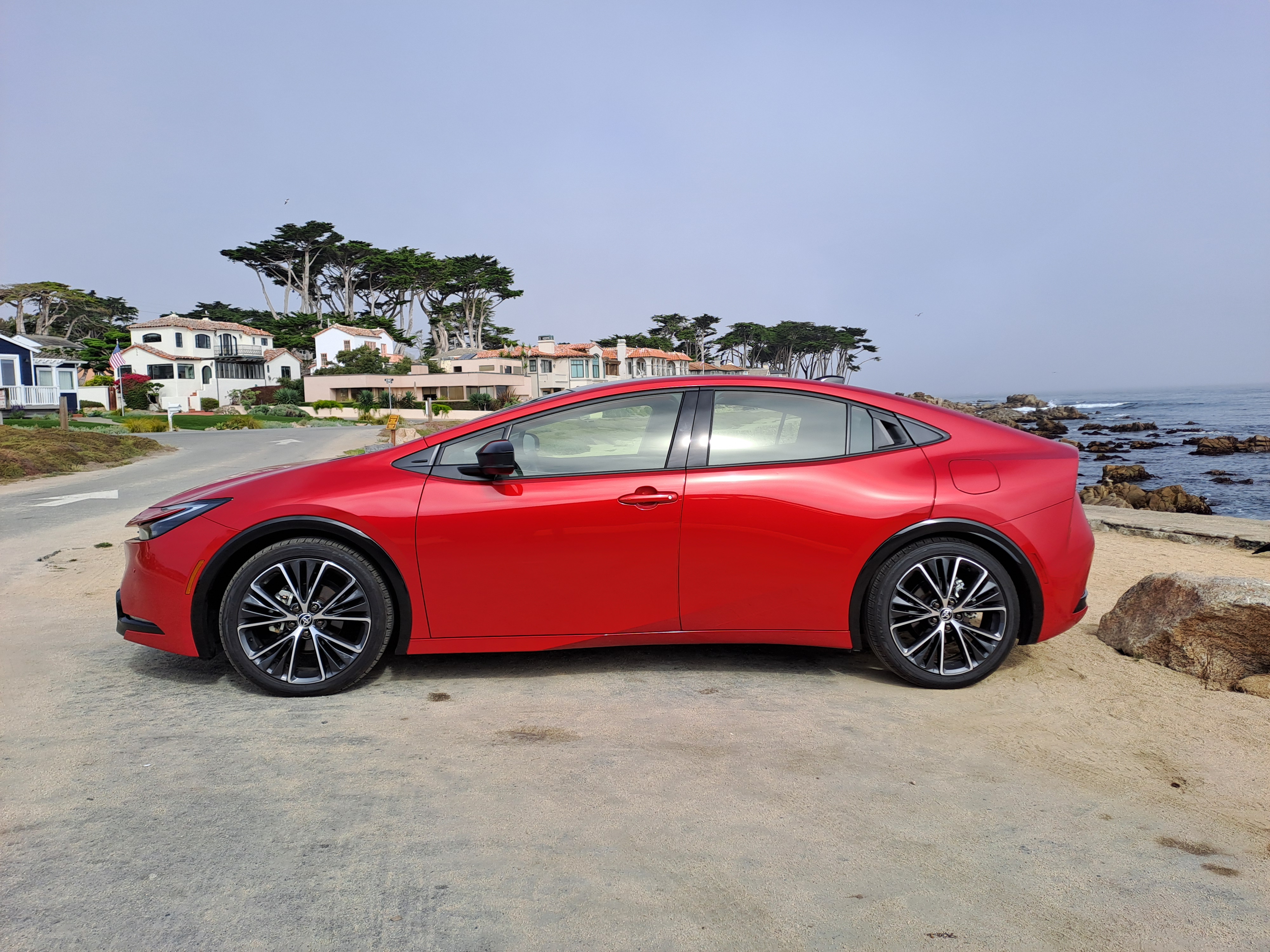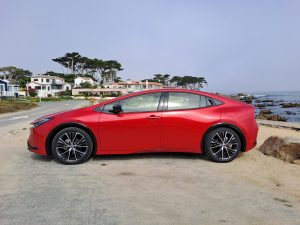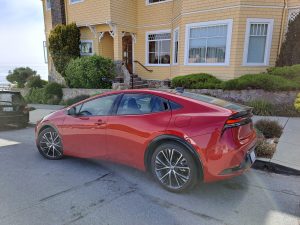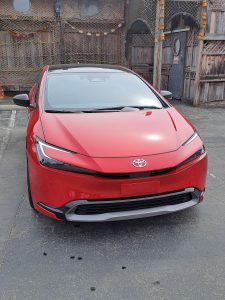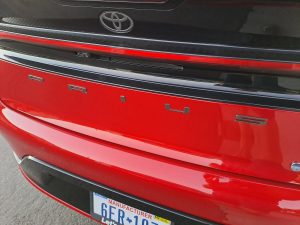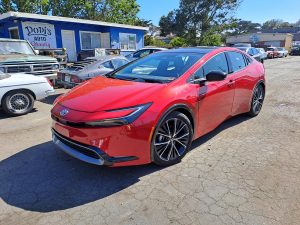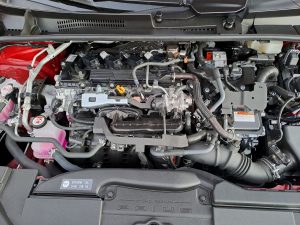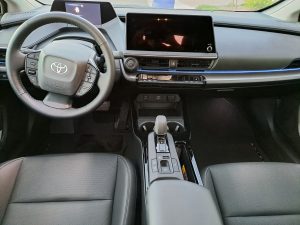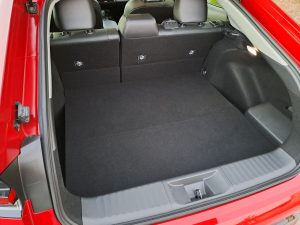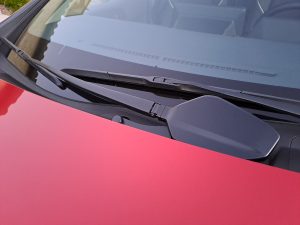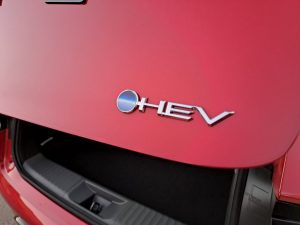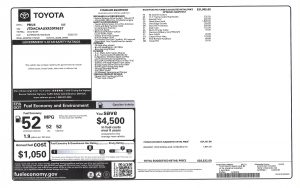Click on any image to see full screen in high res
Throughout the Prius’ years on the market, its seldom, or more likely, never won an award for its looks. Some were strange, a few simply ugly. Guess what; while you may or may not have been looking, the Prius got handsome in its last generational remodeling, which came along for model year 2023.
The bodywork and interior are virtually all new, and distinctly different from all previous Priuii. Most previous models’ somewhat upright greenhouse and stance has given way to a sleek, fastback look that doesn’t impinge on interior room and looks terrific. Several of the previous “squinting fish” front end styles are also long gone, this one featuring slim high-tech lighting and graceful curves. The rear deck looks more like a conventional trunk is still a hatchback that nicely commodious and still with a flat load floor. Not only is the whole car a smart execution of overall packaging, its dang good looking now too.
I can’t tell you how many writers (automotive and otherwise) predicted that the minute long range EVs came to market, the conventional, non-plug-in, regenerative hybrid’s days would be done. I was not among them. And equally guess what; that didn’t happen. We’ve got a ton of EVs on the market now, yet the conventional hybrid remains popular, still sells well, and also with more examples to follow. Toyota’s seminal Camry has now gone 100% hybrid in the powertrain department – no more purely gas I-4s or V-6s to be found. Smart move.
My nicely equipped Prius XLE test car earns a 52/52 MPG rating from the EPA, and I had no trouble equaling that on a recent 750 mile road trip, which combined freeways, highways, around town roads, traffic. Ignoring the sometimes difficult to grasp eMPG rating system for plug-ins, my Supersonic Red’s 52 MPG number is nothing to sneeze at. And why is the “conventional HEV” technology still so innovative and popular, even though it’s been around since 1996/7? Simple: it just works, and works well, for countless drives. That’s because nothing in the owner’s driving experience changes; there’s no plugging in or external charging involved, and thus no range anxiety. You put gas in, drive, it goes, gets at least 52 mpg, and then you fill it up when needed or convenient. Plus certain pure EV models can be a bit spendy. Zero drama with the Prius.
And its an absolute gem to drive too. Plenty of power for all occassions; the 2.0-liter gas inline four-cylinder engine and the “Hybrid Synergy Drive” electric motor assist combine for a meaningful 194 horsepower, more than any previous Prius (say that three times fast) generation. Something else that’s improved a lot is the Prius transmission; early versions of the Continuously Variable Transmission (CVT) were famous for “motorboating” up and down the rev range to balance power output with variable gear ratios, and that unnatural feeling habit has finally been vanquished. The car steps out smartly in all situations, and you’ll never fear of begin stuck in the slow lane in this car. The previously numb electric power steering now has a bit of weight, and what seems like feel; confirms that the steering wheel is attached to the front wheels. This Prius trim level now wears semi-racy 19-inch rolling stock which gives crisp steering response, and downright sporty handline — yes in a Prius. The car’s also quiet, with minimum road rumble or wind noise. Ride quality is good too, firmer and, with better roll and body control than found in most previous models.
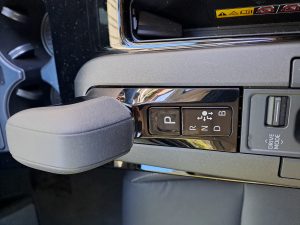
My biggest gripe with the whole car is the shifter quadrant, which you have to manuever the lever left and right and down and back, plus a seperate button for Park. Not quick or intuitive.
The cabin is a general treat. Fully redesigned, handsome, and comfy. Techy types will enjoy the screens, buttons, bells, and whistles, all of which operate well and are easy to come to intuitive terms with. Connectivity with all of your devices is a snap. The seats are firmly comfortable, with plenty of room for five average size adults. As you expect, fit, finish, and materials quality are first rate. I also love that the entire instrument binnacle is 100% visible above the steering wheel.
Let’s talk about the Prius’ value message, which is a good one. Its base sticker is $31,095 plus destination charges, and my tester bottom-lined at $35,532 – a lot of car and fuel economy for that money. If you knock out a few of the high-priced options, you can get your bottom line very much nearer that $31K level. Ditch the glass roof, the optional paint color, the dash cam, and a few other bits and a worthwhile deal becomes a great one for no meaningful loss in driver experience or tech.
We had an ’04 Prius in the Stone family garage way back when, and the car was nothing but solid; but I’m pleasantly shocked at how far this model has evolved and improved along the last 10-year highway. Its much more handsome, comfortable, hi-tech, and a far better performer than our old second gen model was. Would I buy another one? This one – absolutely should I be in this market at the moment. Its now a great car done well, and if you are at all in the Hybrid / Plug-In / EV market, you should give this fifth gen Prius your consideration, or at least a long honest look, as you’ll now like what you see.
Double click to see window sticker full screen

